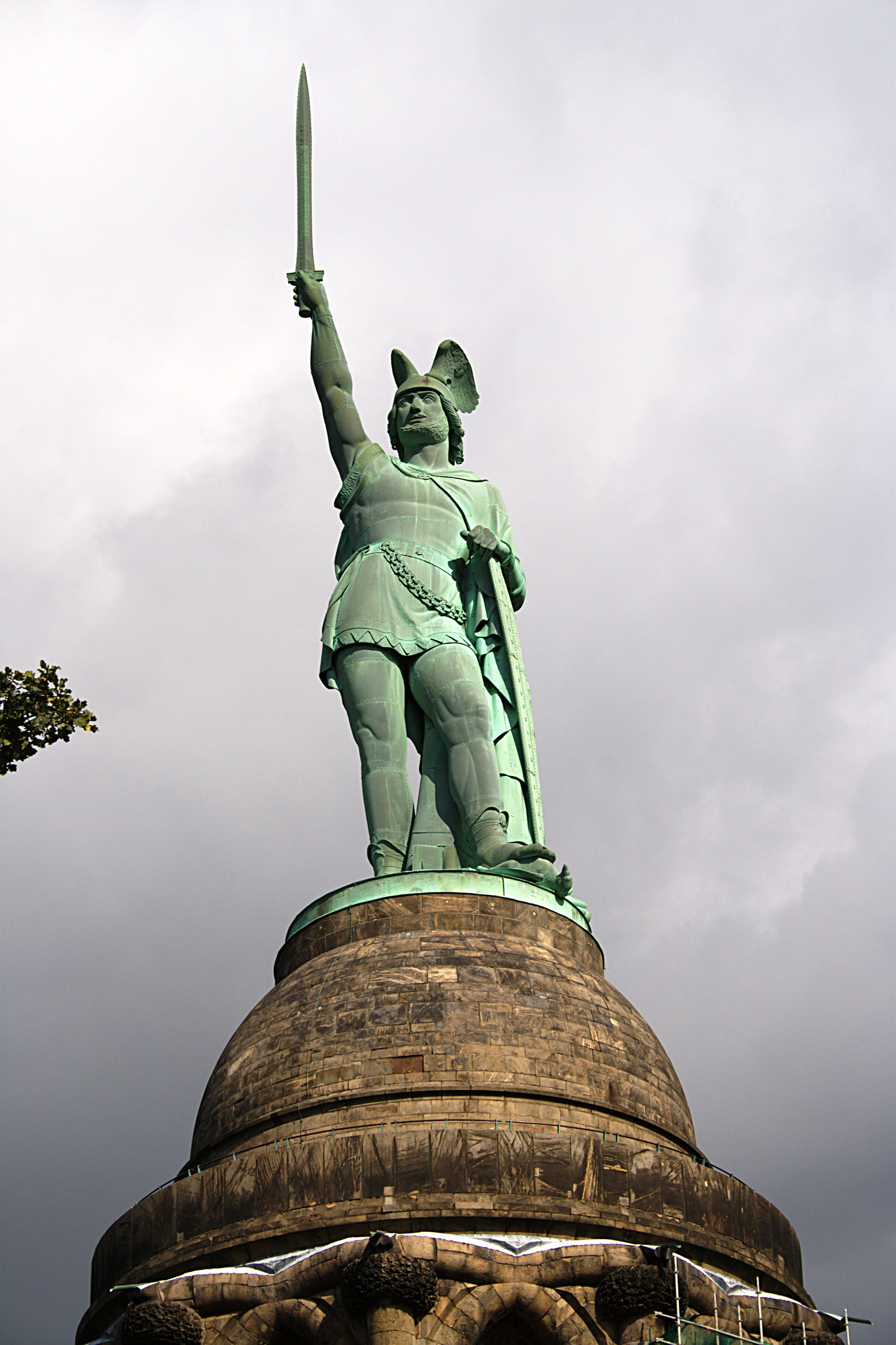Welcome to a new issue of the Journal of Runic Studies, the premier Malkioni publication for studies into the nature of Glorantha. If you haven’t subscribed yet, please consult with the spirit bound to the appropriate electronic page.
Not much annotating of Jeff’s posts this week, because instead I wrote up two hopefully cool articles on the Romans. I wonder what you people prefer between annotations and half-ass history articles?
God Learner Sorcery
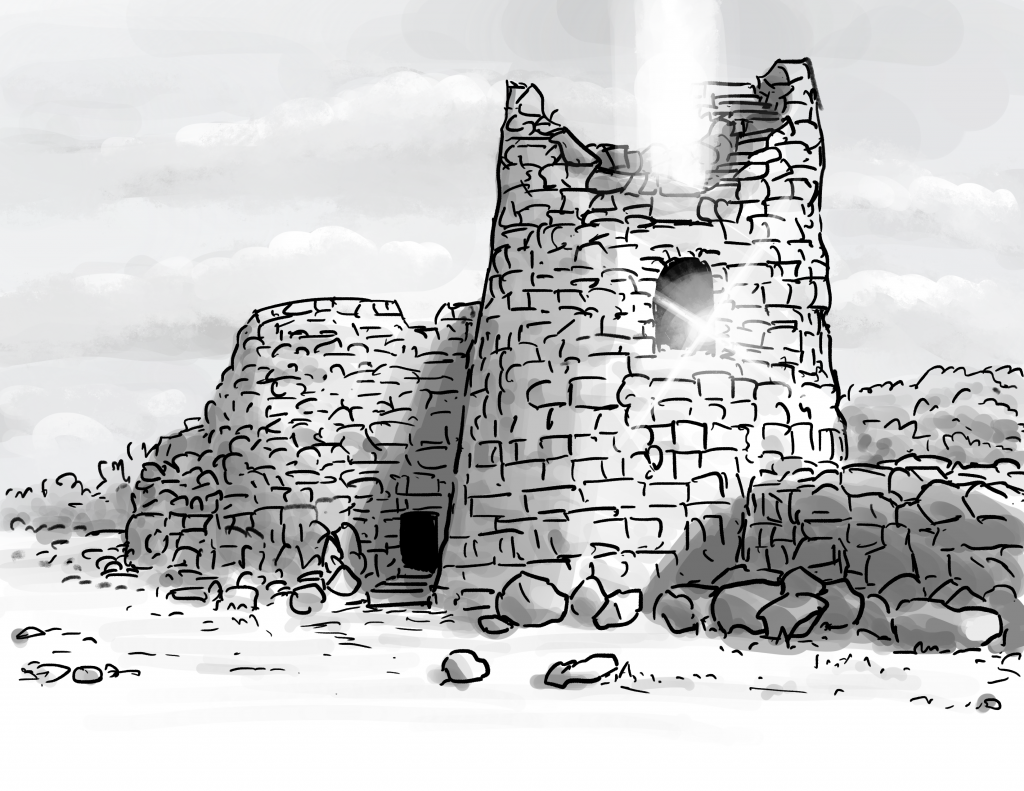
Here is what us God Learners were up to this week.
Glorantha Initiation: Bridgett, Bronze Age Tropes, and the Basement Operation
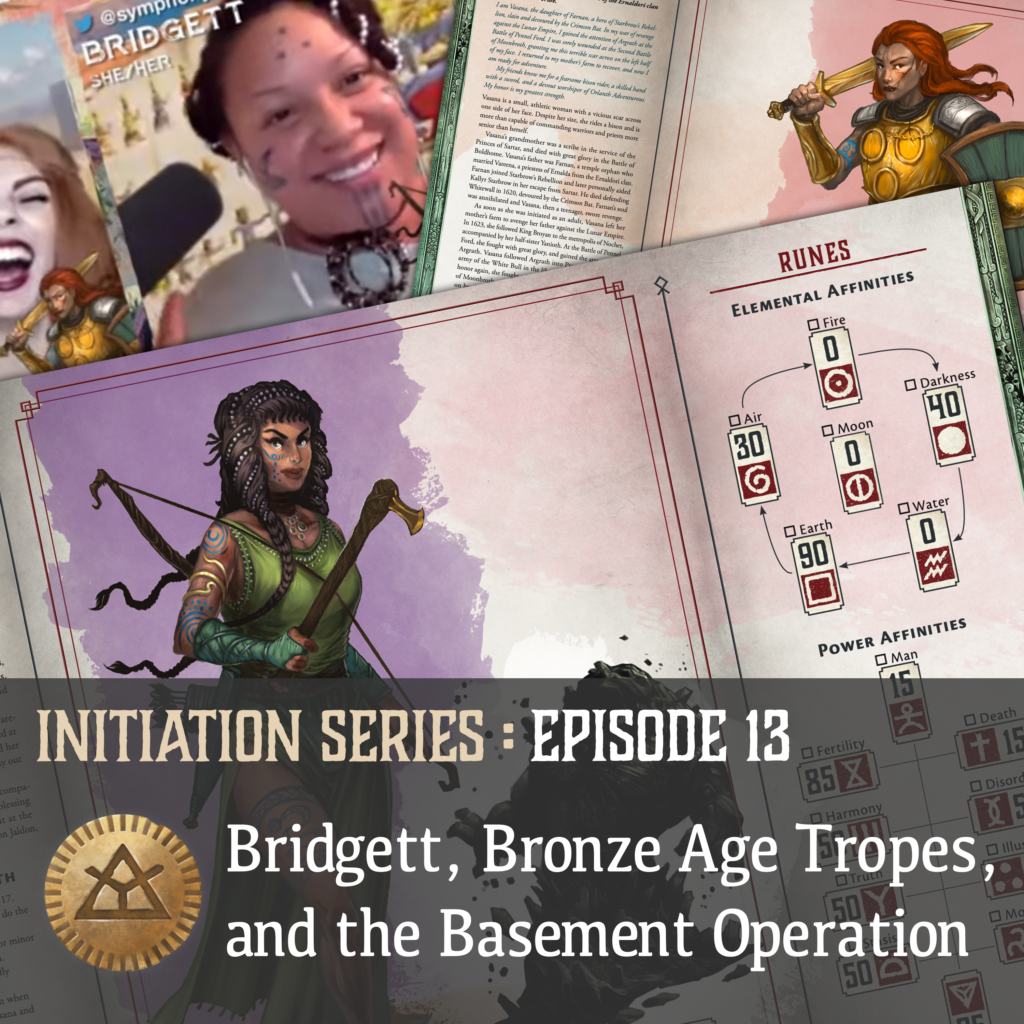
We are kicking off a new season of our “Glorantha Initiation” series with the amazing Bridgett Jeffries! We talk about bronze age tropes, fandom gatekeeping, drawing Earth Runes on your face, spending your evenings in a basement with old men, and more!
Chaosium News

Here are this week’s Chaosium news!
Brace for Announcements
According to Jeff Richard (who knows a thing or two about it), a bunch of books are done with layout and will soon be off to the printers:
And that’s it. Four new books done with layout thanks to the incredible Sim. Now just waiting on final error trapping, and then off to the printer.
Pretty soon we will even announce them!
This sounds a lot like four cults books to me but hey, who knows. I’m running a blog on the internet so I’m supposed to engage in misinformation, wild extrapolation, and clickbait titles, no? Am I doing this right? Anyway, I’m squeezing this maybe-related-maybe-not picture that Jeff shared in a completely different post here just to mislead you:
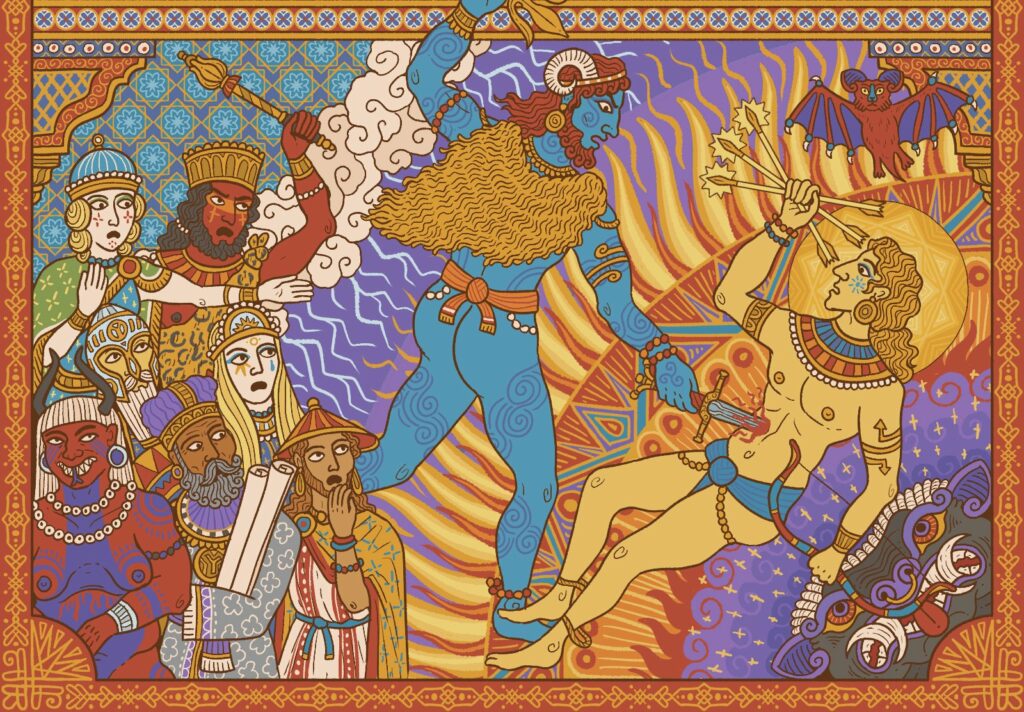
Orlanth and Yelm engaged in contests to see who would rule the gods. The last contest was weapons – Yelm his arrows of light, but Orlanth produced the sword Death and with it Orlanth sent Yelm to the Underworld to join the ranks of the dead.
Anyway, we might get these books in the fall. I’m not joking or being snarky, here, that’s really what I’m expecting given the current printing and shipping situation.
Wild Days at DriveThruRPG

According to MOB, the last week has been “wild” on DriveThruRPG, while Chaosium’s RuneQuest and Call of Cthulhu Starter Sets were discounted in PDF for $0.99… and the same for the Basic Roleplaying rulebook (they’re now back to their normal price).
All three products have shot up to Adamantine Best Seller, which shows that bug numbers of disgruntled D&D players went and grabbed other games to try during the whole OGL debacle. Whether these people will actually read and play those games, or whether things will settle back down to the usual, is still undetermined… we can only hope!
ORC License Q&A
Speaking of the OGL debacle, I was wondering last week if Chaosium would move their BRP and QuestWorld SRDs to the new Paizo-led ORC license, or simply offer their support for it. Austin Conrad pointed me to this particular answer in a recent update to Chaosium’s Q&A:
Q: What about Paizo’s OGL initiative?
A: Chaosium is part of the Open RPG Creative License initiative aka ‘ORC’, announced by our friends at Paizo. […]
In all likelihood we will switch our own Open Gaming License model to the ORC in due course.
Jonstown Compendium

The Jonstown Compendium is Chaosium’s community content program for all Gloranthan games, hosted on DriveThruRPG. Disclaimer: all the relevant links are affiliate links that hopefully will let us cover some of the hosting and maintenance costs for the website and podcast! Thanks for using them!
Nick Brooke’s Gloranthan Manifesto

Nick Brooke’s collection of essays about Glorantha, RuneQuest, and everything in between and around and under and diagonally behind are now available in print on demand via DriveThruRPG. The PDF is still free, and now also available on DriveThruRPG, so you can can get that first if you haven’t heard of this (before it was available in two parts, here and here)
Nick describes it as a “selection of opinion pieces” and that’s definitely what you get for your money. And since it’s free, why not? These are the thoughts, conclusions, and revelations of a guy who has been thinking a lot about Glorantha for a long time.
A lot of this is going to be familiar if you’ve been hanging around Gloranthan fandom since the 1990s, or if you’ve lurked around Nick’s old website.
Jeff’s Notes

Jeff Richard, the current mastermind on everything Gloranthan at Chaosium, is often posting notes and thoughts on the RuneQuest Facebook group. Here’s our curated list from the past week. A partial archive of these sources is compiled on the Well of Daliath.
Maniria Notes
Jeff has posted a few notes on Maniria this week! No annotations from me here: like I said, I spent my limited free time educating myself about the Roman military, and besides I don’t think there’s much in these that needs any annotation. All it needs is a good map to situate yourself:
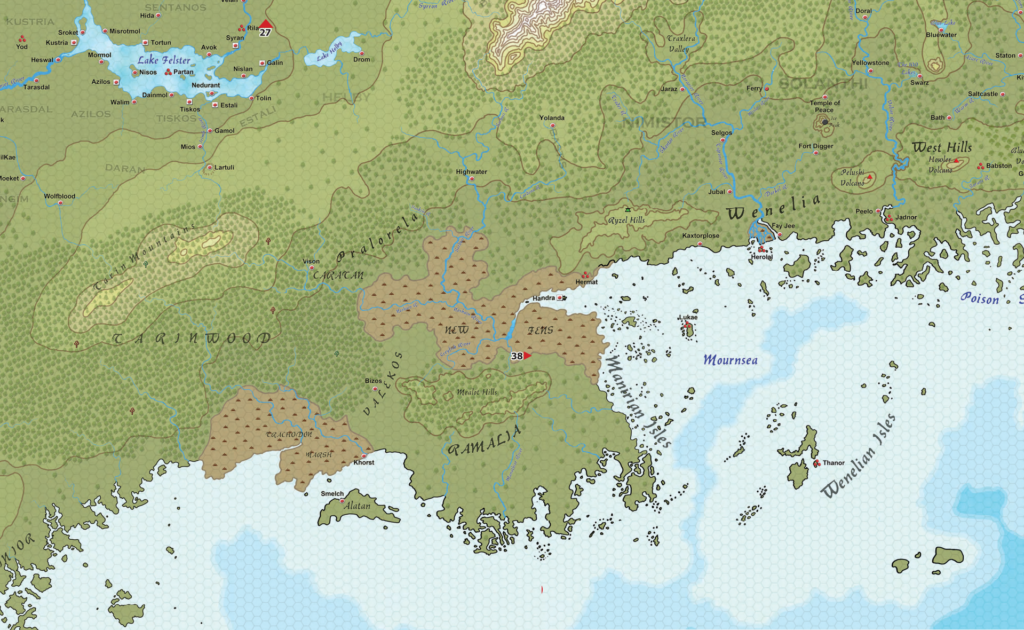
Maniria is the southwestern part of Genertela shown above, going from Tarinwood to Wenelia, more or less. In the upper-left corner you can spot Lake Felster, which we heard a lot about recently with all the posts on the Malkioni in Ralios. To the west is Seshnela. To the east are Esrolia and Caladraland. All good?
- Some basic information on Maniria and it cults.
- Some information about the Trader Princes who setup caravans from Ralios to the Holy Country and are now seeing their margins dwindle in light of the Opening, as everybody now just sails around. Plus, some notes about the influence of Esrolia on Maniria.
- Even more on the Trader Princes, and how they sort of bridge the gap between the Orlanthi and the Malkioni in how they position themselves in Manirian society.
- Information about the Arstola Forest, one of the Six Great Aldryami Forests. It’s missing from the map above, but it’s located above the upper-right corner. It goes all the way to Esrolia.
- A short post about Dragonewts in Maniria (their city in in the Ryzel Hills, just left of Wenelia on the map above).
- A short post about Ramalia, which makes me want to read a bit more about the place.
Overlaying Maps
Something Greg taught me was to regularly overlay maps, so that you could see how things interact with stuff beyond the border of the map. This has a big effect on how I read history as well.
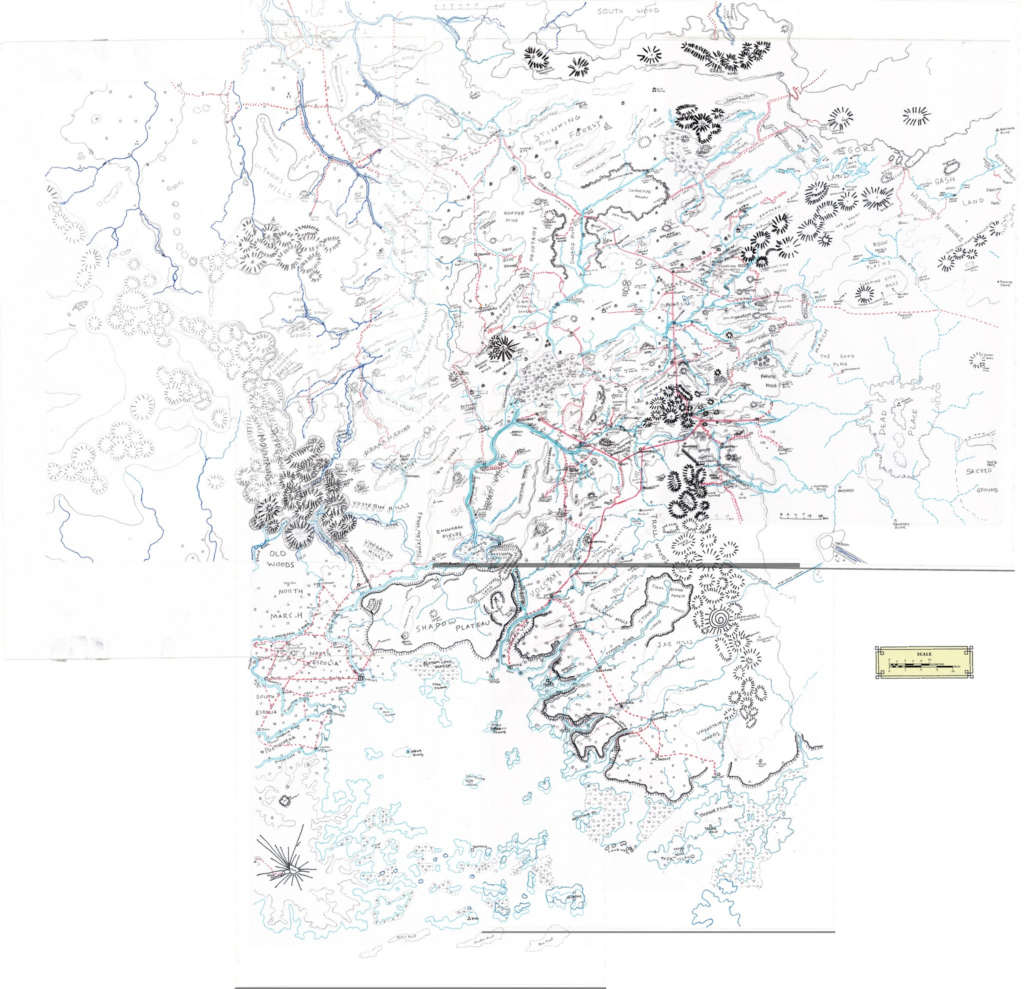
[…] this is why stitching together maps is such a useful exercise. Of course Sartar and Prax are closely linked. But if they are on separate maps it is hard to notice the obvious!
There are also multiple layers drawn on transparent paper such as, say, forest coverage:

CHA
Jeff talks about raising CHA in play:
CHA is arguably the most important characteristic in the game (at least for ambitious characters) but is the easiest stat to improve in the game. For example:
Got a cool magical sword? +1 CHA.
Led a successful military expedition? +1 CHA.
So if you have at least a 16 CHA starting out, you are well on your way to becoming a Rune Lord. If your CHA is lower, don’t worry it can be trained as well. But if you decided to make CHA your “dump characteristic” then you have a long road ahead of you.
The rules for this are in the RuneQuest rulebook page 420, in case you’re wondering. Note that, according to the rules, you only get +1 for the cool magical objects, regardless of how many cool magical objects you have. It does seem however that you get get multiple raises from leading successful military expeditions, so maybe that will motivate players to take some initiative? I’ll have to mention this to my group: they’re taking a file of Yelmalion hoplites to help fight off Greymane’s raids in Esrolia!
Miscellaneous Notes
- What to buy: Jeff’s slightly updated and reworded list of what Gloranthan and RuneQuest newbies should buy first. Nice of him to give a shout-out to the Jonstown Compendium!
- Sartarite names: an excerpt from the upcoming Sartar Book about Sartarite names, although if there’s not much you wouldn’t know about if you have already been using this Well of Daliath page. You can even find a few name generators online, with this one being my favourite.
Elsewhere on Arachne Solara’s Web
Not everything is about Glorantha, although most things are! Here are loosely relevant things that we found on the interwebs.
Lunar Javelins Are Useless
…once they’ve been thrown at you, that is.
This week, I learned a cool thing about Roman javelins that most of you probably knew already (because you’re all big nerds) but I figured I would write about it for the few in the back who are ignorant like me.
Okay so the Roman javelin, called a pilum (plural: pila) is not built the way you might expect a javelin to be built. It’s not just a long wooden shaft with a spear point at the top. Instead, it’s a not-so-long wooden shaft followed by a thin metallic shaft that ends in a narrow pyramidal spear point.
Just look at the picture below, it’s simpler. In order: a thin (or light) pilum, a thick pilum, and a weighted pilum. The light one is the most common. Roman soldier often carried two of those.

Anyway, when you throw this at a bunch of hillbillies with wooden shields, the whole metallic shaft often goes through! So not only have you just injured one of those bearded savages who thought they were safe behind their puny shield, they also now have a half-meter-long piece of metal running through it, and a big wooden stick hanging on the front side. It makes the shield unbalanced and useless. Obviously they could remove the javelin from the shield, but because of the pyramidal design of the spear head that’s actually not easy to do in a hurry. So lo and behold they need to throw away the shield and face your charging troops completely exposed. Yay!
Even if the pilum doesn’t go through the shield, the metallic shaft is soft enough that it will bend on impact. This makes it useless and cannot therefore be picked up and thrown back at you. Yay again!
Here’s a video showing this in action (you gotta love experimental archaeology):
From what I understand, historians are still debating whether or not the pilum was actively designed to bend like this, or if it was a happy incident that they figured they would just keep. Some think that it was a mix of both, with the bending thing being an accident that was later used to improve the pilum design under Gaius Marius and then later again under Julius Caesar.
Anyway, someone correct me if I’m wrong but justifying this javelin design might require a bit of bronze-age fantasy loophole since I don’t think bronze is strong enough to work in this case. The Roman pilum was made of various grades of iron. But hey, what’s a fantasy world good for if not for handwaving some cool trope with some bullshit magic stuff? Maybe there’s something like Moon Silver that’s equivalent to soft iron, or maybe the Lunars handing out fat government contracts to the nearby Dwarfs? I’m sure you can figure something out!
Give Me Back My Legions!
I’m on a bit of a Roman bender this week, but this is cool too. I was thinking about the Dragonrise, in which a whole chunk of the Lunar Army gets destroyed in a day. According to these numbers from Jeff, the body count is about 10,000 soldiers, which represents about 13% of the Lunar Empire’s military might compared to what they had 4 years prior. They lose a lot of people elsewhere (such as the war in the Holy Country) during that time too, but I’m cooking the numbers a bit to get you to the Battle of Teutoburg Forest.
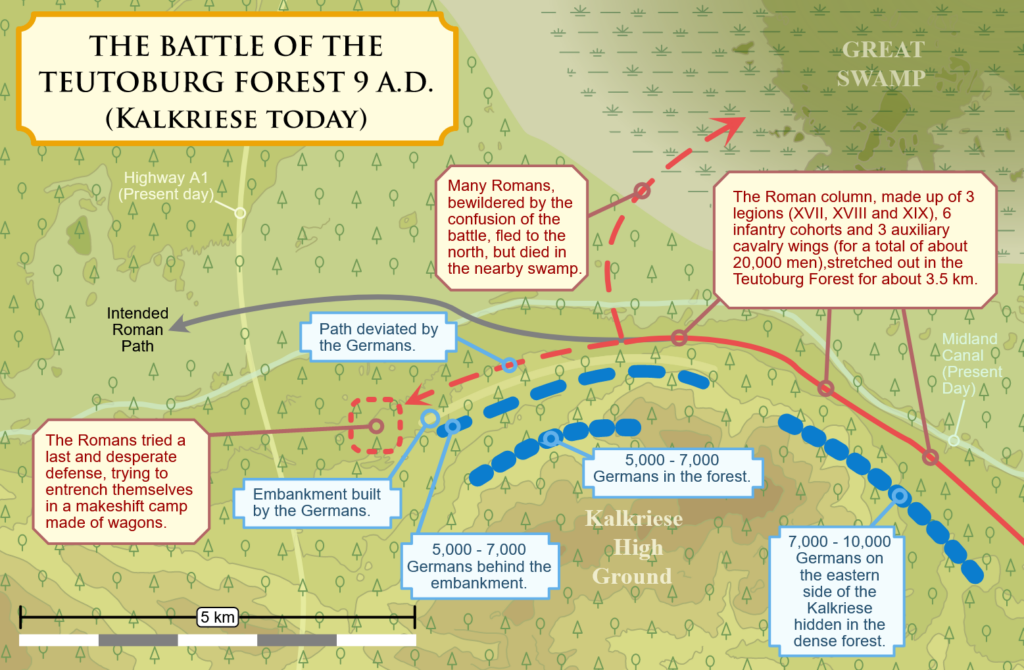
This battle from 9 CE is one of the most brutal and important defeats in the history of the Roman Empire. The whole story is quite complicated, so if you want the detailed version, you can for example listen to the History On Fire podcast on the subject (part 1 and part 2). The short version is as follows.
The Roman Empire had a storied and complicated relationship with the Germanic tribes. They had more or less conquered their lands (or so they thought) up to the Rhine. Some of the Germanic chieftains under Rome’s control even came to Rome to study Roman culture and sciences. Arminius (his original Germanic name unknown) was such a guy, and he went as high as becoming a trusted advisor to Publius Quinctilius Varus, a Roman general who served Emperor Augustus. But Arminius was a cunning little bugger who was playing both sides: he was also uniting a few of the many Germanic tribes to rebel against the empire.
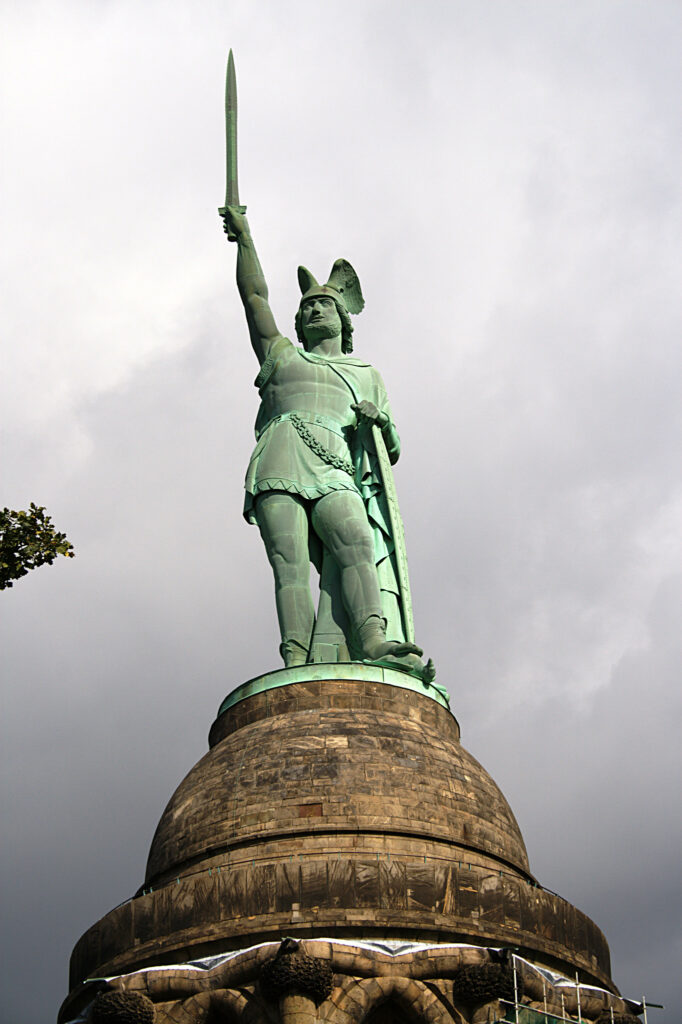
Using his unique position as a double-agent, his knowledge of Roman military logistics, his knowledge of local terrain, and Varus’ tactical fuck-up of a troop transfer in what was supposed to be a volatile province, Arminius spotted the perfect opportunity to attack.
Overall, between 15,000 and 20,000 Roman soldiers died in, at most, a couple of days. According to these numbers, that’s more than 12% of the entire military force of the Roman Empire at the time (excluding auxiliary forces… if you include those, that’s still between 6% and 8%). So if a bunch of Germanic barbarians can do this kind of damage when taking Roman soldiers by surprise, I suppose a big-ass dragon can do something similar.
According to the historical record, Emperor Augustus was so shaken by this whole disaster that he spent a couple weeks going around his palace, banging his head on the walls, repeatedly shouting “Quintilius Varus, give me back my legions!” I wonder if the Red Emperor does the same after the Dragonrise, losing his shit up there in Glamour…
If you’re wondering what happened next, obvious the Romans came back with a vengeance, but without any clear victory as far as I can tell. Then, they just gave up because, first, they had better things to do than wage battles in the muddy cold of the Germanic countryside, and second there was nothing to gain by conquering these people — unlike Sartar which has very lucrative trade routes with the Holy Country, Germania was quite worthless.
And this, ladies and gentlemen, is why Joerg isn’t speaking a Latin language nowadays.
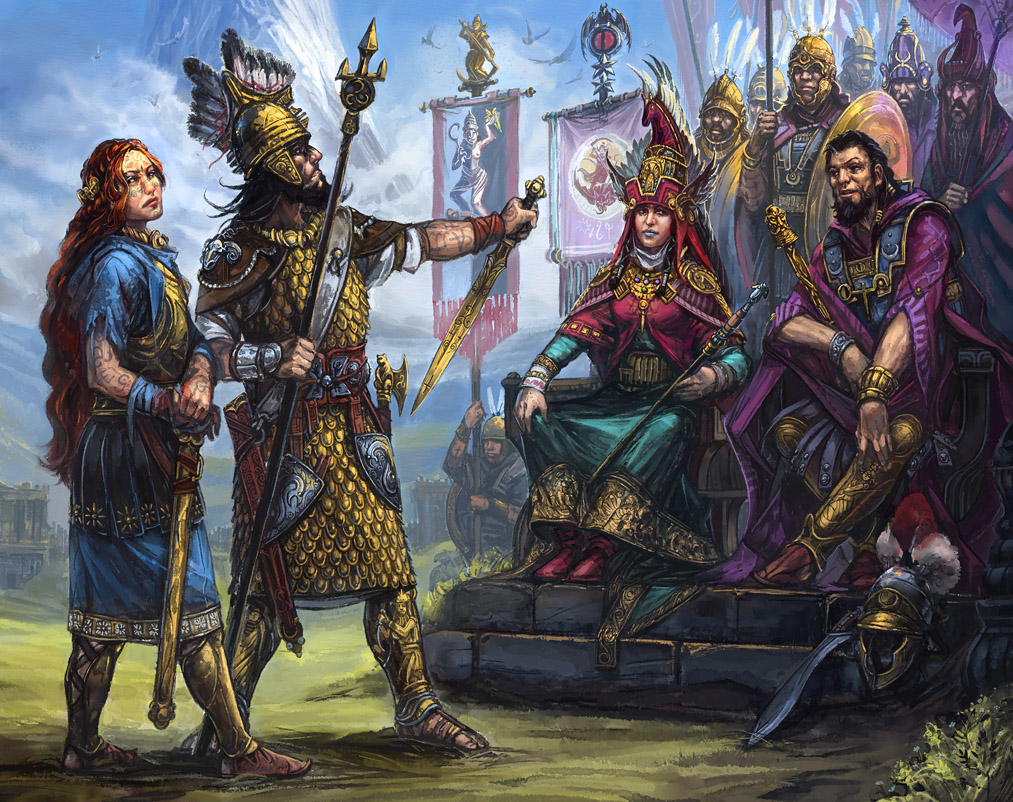
I’m now sort of seeing a bit of Arminius in Kallyr Starbrow. Just like him, she only managed to unite a few tribes against the Lunar Empire, with many more sitting the whole thing out, or even sort of collaborating with the “enemy”. Just like him, she managed to destroy a whole chunk of her enemy’s military with far less soldiers on her side. Just like him, she was very (too?) ambitious, and she died not very long after.
The Romans were no angels, but the Germanic tribes weren’t the good guys either. There’s a whole side of the story about what Arminius and his people did to the Romans. A good number of Roman soldiers actually preferred to commit suicide rather than be taken, so that should give you a hint. I wonder what sort of atrocities the Sartarite rebels might have done too, and how many of the Lunars who narrowly escaped the Dragonrise still preferred to kill themselves. You know, in case you wanted more blood and horror in your games…
Thank you for reading
That’s it for this week! Please contact us with any feedback, question, or news item we’ve missed!


